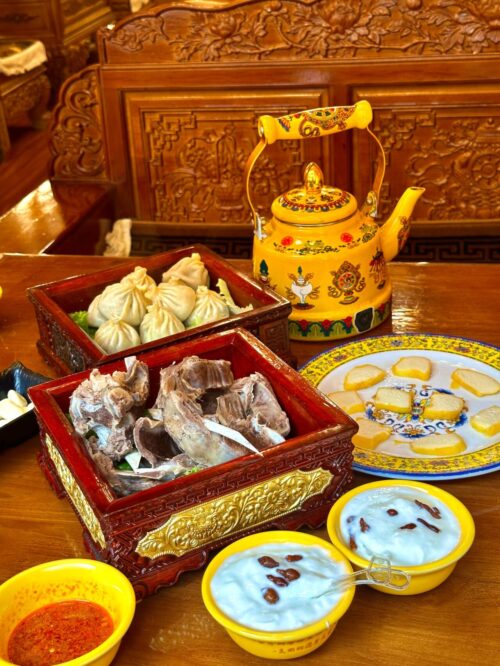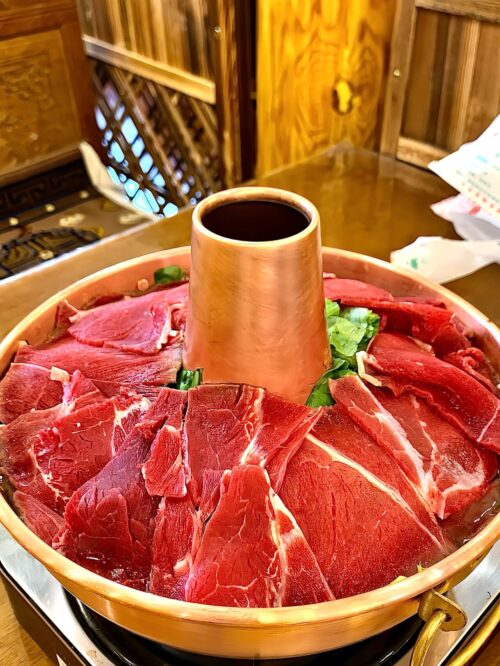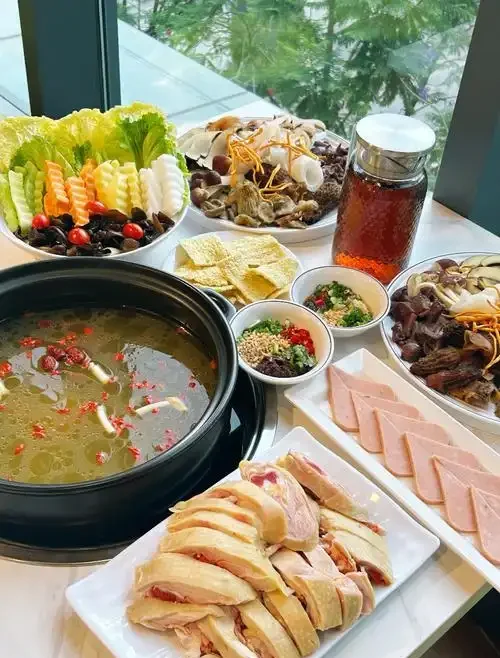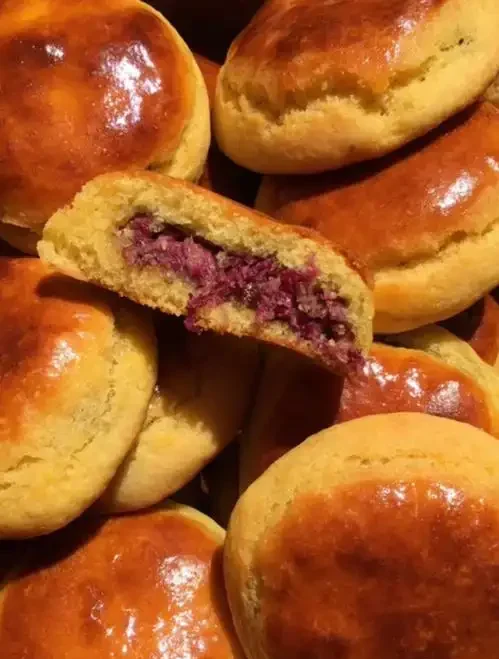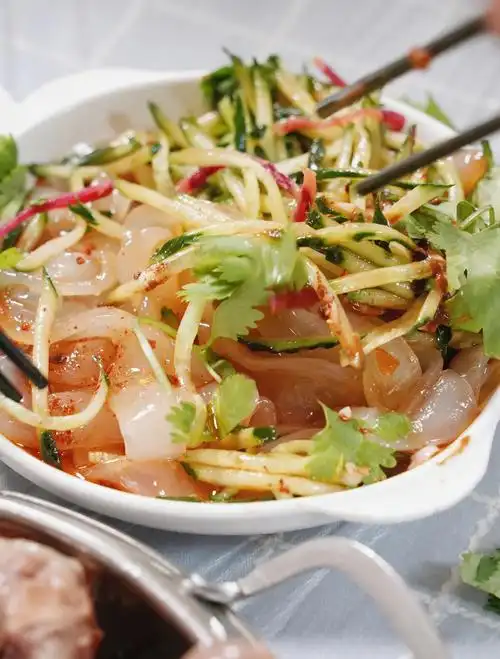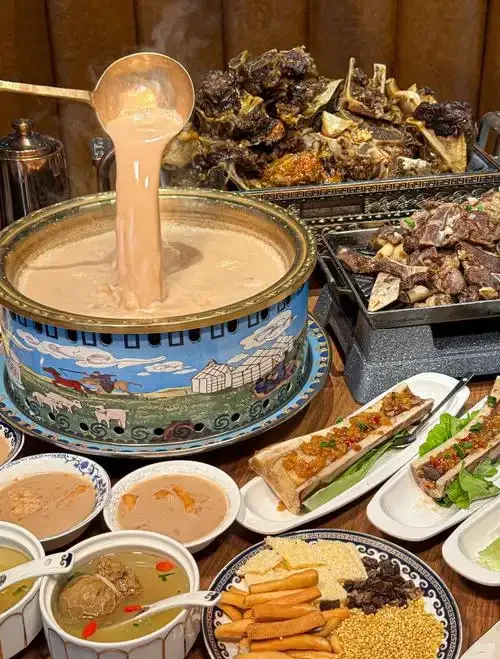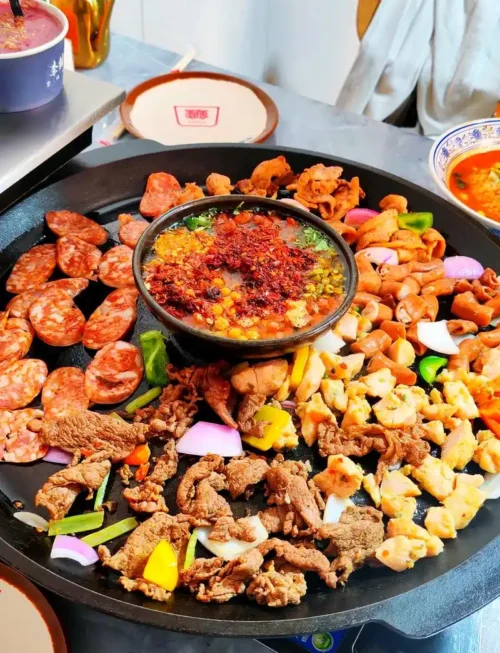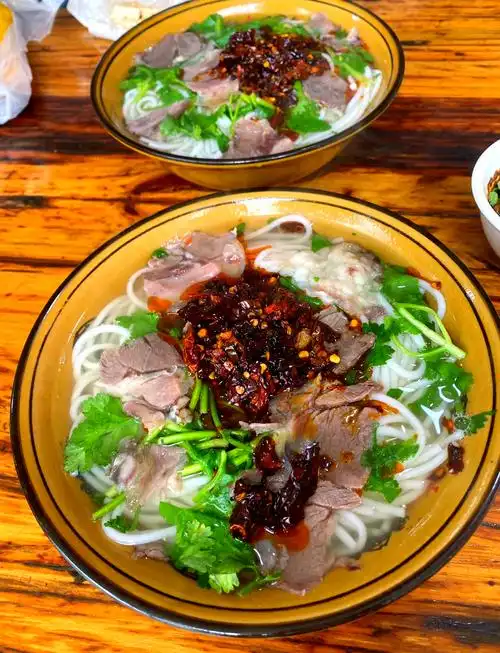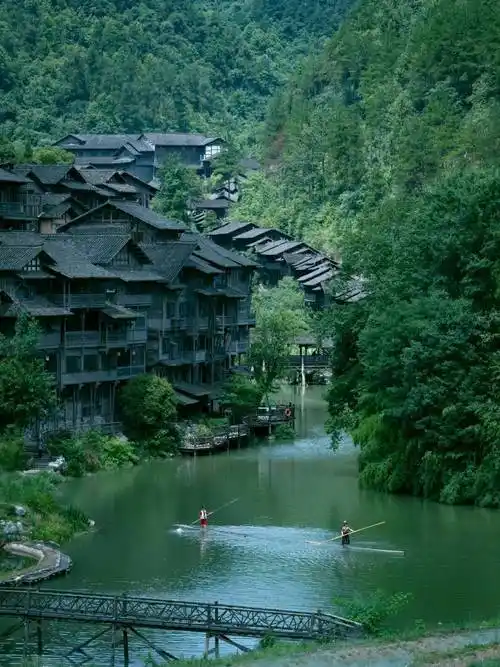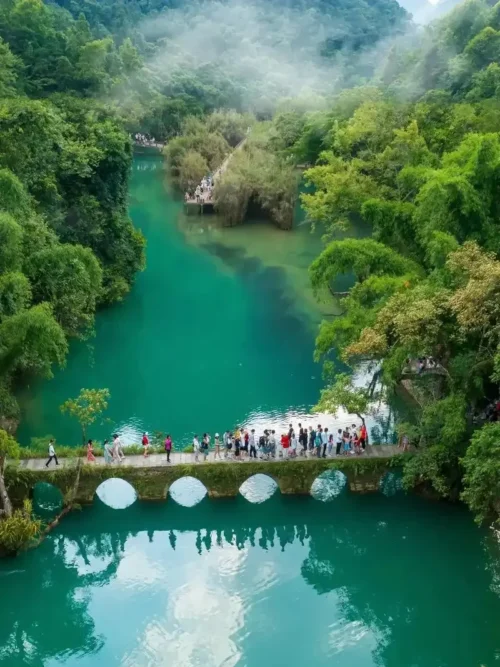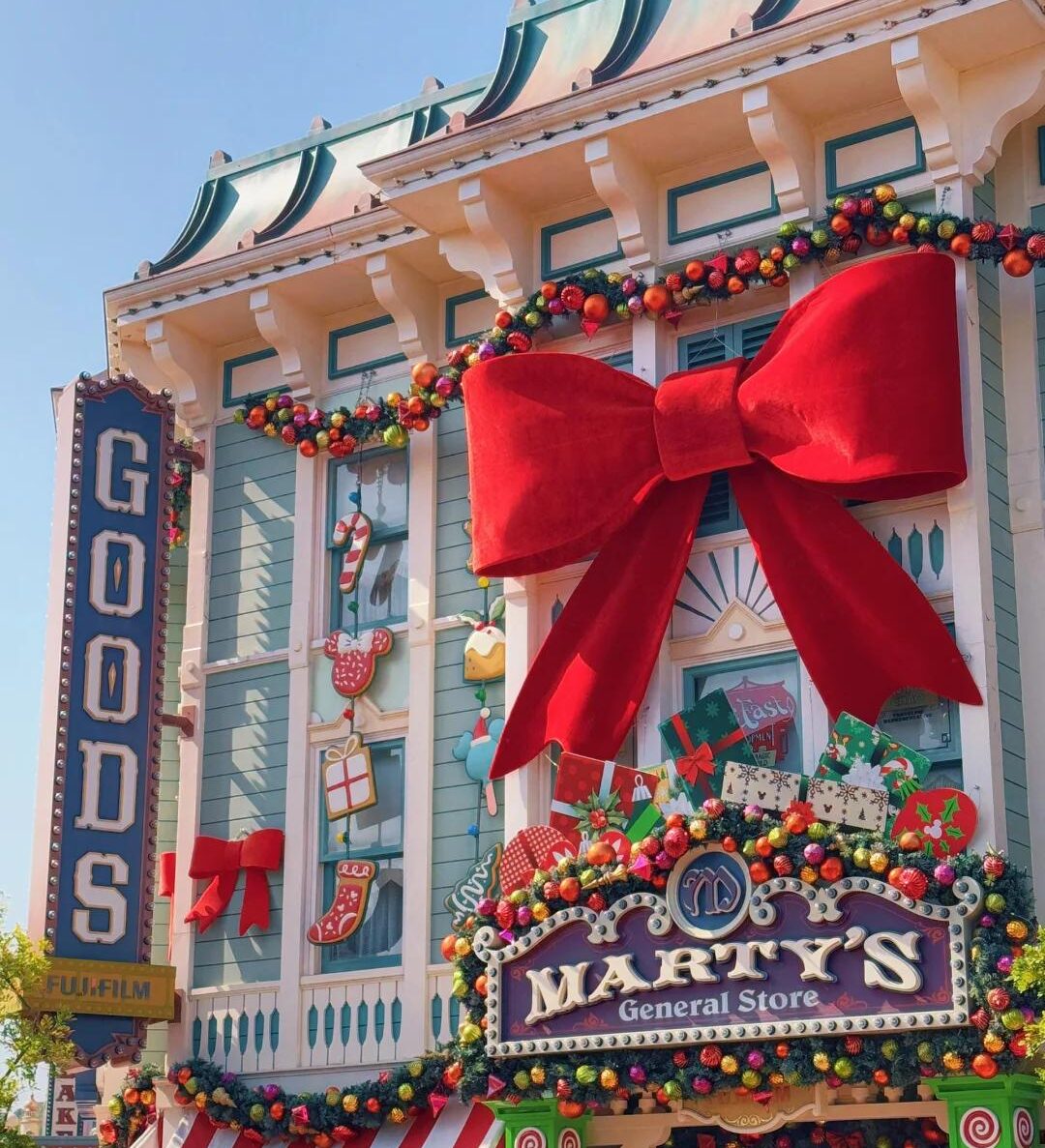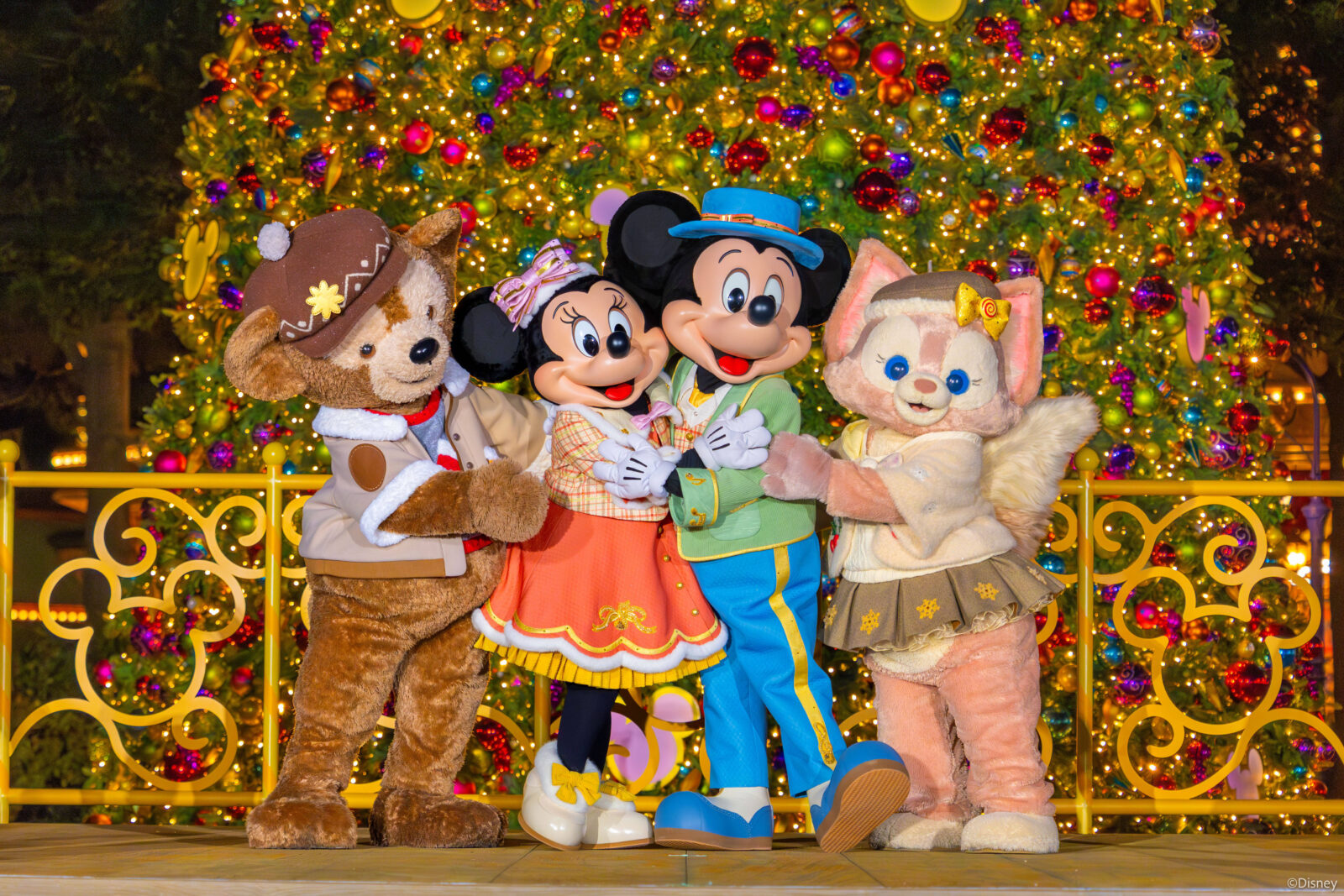In summer 2025, heatwaves are everywhere. But a few cheap places to visit in August still stay cool. Some low-key Chinese cities offer mountain air, $4 meals, and cozy beds—all without the tourist crush. Sound good? Scroll down—we’ll show you where comfort, savings, and chill vibes meet!

Why China’s Cool Cities Are the Smartest August Escape in 2025
When it comes to picking the cheapest place to visit in August, the question isn’t just about price—it’s about comfort and vibe.Here’s our formula. Not perfect, but it works:
value = cool weather + daily costs you can breathe through + something local that sparks joy.
“Cool” means under 28°C, with actual breezes—not aircon tricks. “Costs” mean no stress buying street snacks or paying for a hostel. And that spark? Maybe a street opera, or someone handing you plum juice and pointing to a hidden path. That feeling is the real win.
Every spot we chose follows this. They stay naturally cool—jeans-in-the-afternoon cool. And every one is a cheapest place to visit in August where the savings don’t feel like a compromise.
Cool vs. Costly: China’s Hidden Alps Beat Europe’s Price Tag
You hear “Switzerland” and instantly picture lakes, glaciers, chocolate—and insane prices. It’s stunning, sure, but also the kind of place where a burger might cost you $35. I once paid 8 euros for bottled water in Zermatt and still regret it. Now, flip the script. Go to Shangri-La or Lijiang in Yunnan. You get the same crisp mountain air, fluttering prayer flags, and winding valleys—but everything’s in Chinese yuan, not Swiss francs.
A yak hotpot here? $6 USD. A mountain-view room that smells faintly of cedar? $25–30 USD. And local experiences like visiting Songzanlin Monastery or biking around Lugu Lake rarely top $10 USD. So yeah, you’re not trading down—you’re just paying sane prices in one of the cheap places to visit in August that still gives you fresh air and a story to tell.
Let’s put it into a quick side-by-side.
| Location | Avg. Temp in August | Daily Budget (USD) | Typical Meal | Accommodation | Local Culture Access |
|---|---|---|---|---|---|
| Shangri-La | 10–22°C | $35–45 | $3–6 | $20–30 | Monasteries, Yak farms |
| Zermatt | 11–24°C | $180–250 | $25–40 | $100–150 | Chocolate, Cable Cars |
1. Shangri-La, Yunnan— 16°C (61°F), $40 USD/Day
Known For: Tibetan culture, high-altitude serenity, and summer coolness
Average August Temps: High 22°C (72°F), low 10°C (50°F)
Average Daily Costs: $35–45 USD / person
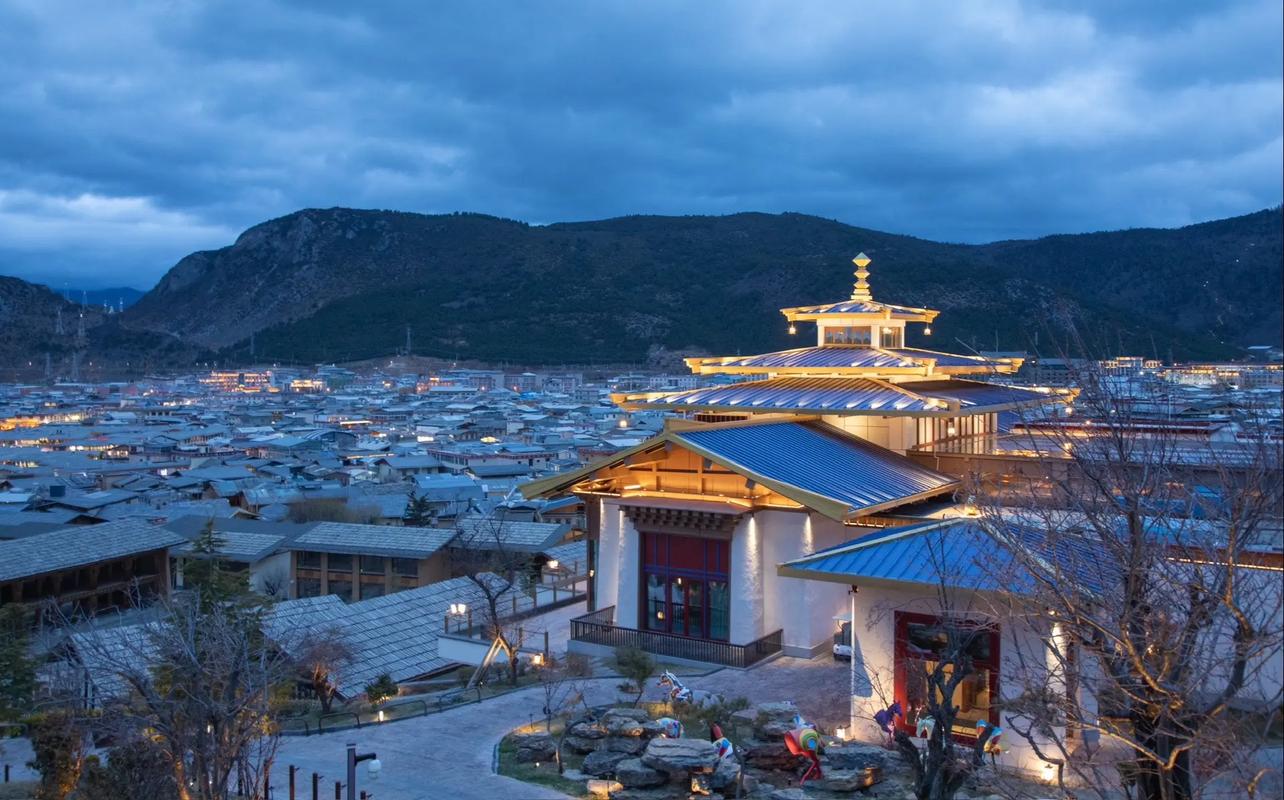
Shangri-La Moonlight City
You hear “Shangri-La” and probably imagine something fictional—somewhere mythical and untouched. It’s real though, and tucked into northwest Yunnan near the Tibetan plateau. In August, while most of China swelters, this place feels like late spring. Hoodies in the afternoon, jackets at night. That alone makes it stand out when you're looking for the cheap places to visit in August that doesn’t feel like you’re settling.
What makes it even better? Budget travelers can manage on under $45/day, including food, lodging, and sightseeing. The old town offers guesthouses that accept foreigners (make sure to double-check when booking), and you’ll easily find beds for ¥120–180/night ($17–25 USD). Local meals—think yak hotpot, barley buns, butter tea—rarely cost more than ¥25 ($3.5 USD).
Things to Do That Don’t Cost Much
Wandering Dukezong Old Town is free and feels like time travel. Songzanlin Monastery charges ¥90 (~$12 USD), but it’s well worth it—monks chanting at dawn, gold roofs catching the morning sun. You can walk around Napa Lake or rent an electric cart for ¥30 (~$4 USD). Most visitors end up slowing down here: sitting under prayer flags, sipping yak milk tea, watching the sky change.
Local Food That’s Cheap and Full of Character
- Refreshing yak yogurt with a tangy twist
- Fresh yak meat cooked in a copper hotpot
You won’t find fast food chains, but that’s a good thing. Head to Tancheng Yak Hotpot (丹成牦牛火锅) if you want something communal. They serve a steaming bowl of wild mushroom and yak broth for under ¥60 ($8 USD), good for two. Or try tsampa (roasted barley flour) at street stalls—nutty, chewy, and under ¥10 ($1.4 USD). Eating here feels earthy and healing, like food with memory.
Where to Stay Without Breaking the Bank
Try Bodhi Boutique Inn or The Tea-Horse Guesthouse—both foreigner-friendly, well-rated, and central. Rooms range from ¥120–180/night, and many include free breakfast. Staff often speak basic English, or at least will use a translation app. And most accommodations sit within walking distance to cafes, monasteries, and trailheads.
If you're into hiking, don't miss Tiger Leaping Gorge in Shangri-La—it's a stunning and challenging trail that’s totally worth the effort!
2. Kunming, Yunnan— 21.5°C (71°F ), $30 USD /Day
Known For: Eternal spring weather, rice noodles, chill local pace
Average August Temps: High 26°C (79°F), low 17°C (63°F)
Average Daily Costs: $25–35 USD / person
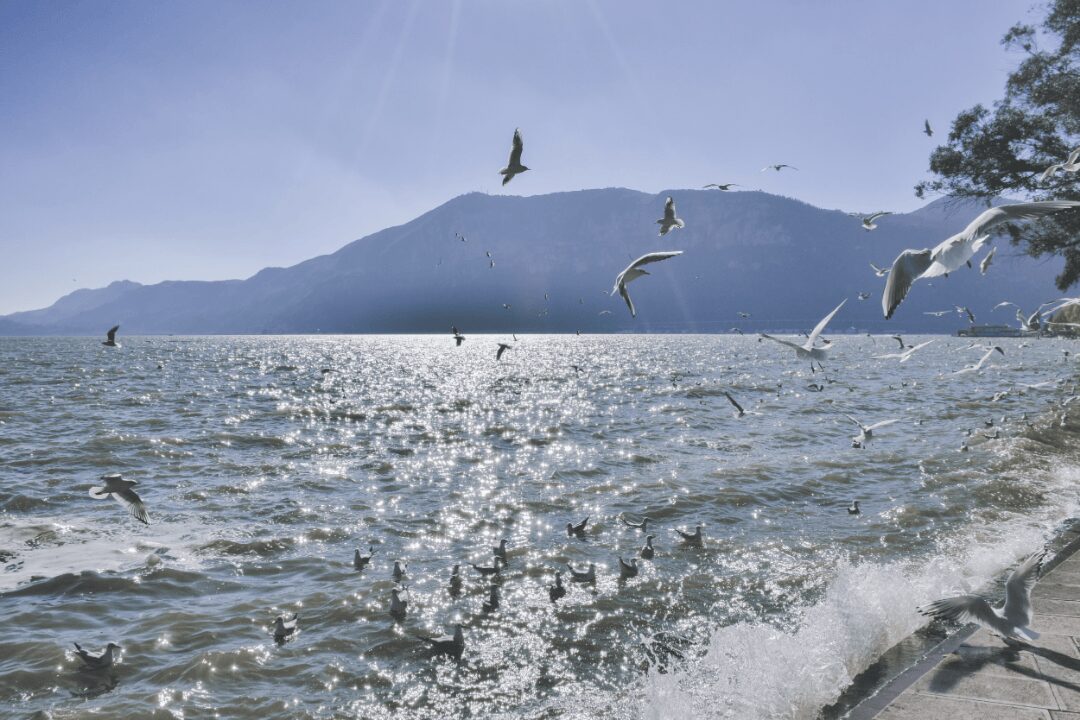
Flocks of pigeons flying over the lake at Green Lake Park
You might not expect to wear a light jacket in August, but in Kunming, it’s normal. Locals call it the “Spring City” for a reason. Even in summer, the breeze feels soft, and the sun doesn’t bite. Compared to other cities roasting at 35°C, Kunming sits comfortably cool—making it one of the cheapest places to visit in August that doesn’t fry your brain. Add in the easy public transport, low-cost eats, and hostels that actually feel homely, and yeah—it checks a lot of boxes.
You can budget around $30 a day here, with no real sacrifice. A basic room in a guesthouse or hostel goes for ¥100–150/night ($14–21 USD), and many allow foreigners (just double-check ahead). A full meal—like Yunnan “crossing-the-bridge” rice noodles with side dishes—costs around ¥20–30 ($3–4 USD). Even coffee in indie cafés near Green Lake rarely crosses ¥25. And museum entries? Often free or just a few bucks.That mix of affordability, calm, and culture makes Kunming quietly stand out as a cheapest place to visit in August that still feels like a vacation.
Things to Do That Don’t Cost Much
If you’re in Kunming and feeling restless—but not looking to spend a ton—start at Green Lake Park (翠湖公园). It’s free, shady, and always full of life. You’ll spot old men with pet birds, kids chasing bubbles, and students strumming guitars. If the weather turns cloudy (which it often does in August), duck into the Yunnan Provincial Museum—modern, well-lit, and totally free. The ethnic minority exhibits are surprisingly in-depth, and the air-conditioning feels like a reward.
For something outdoorsy, take a ¥2 subway ride to Daguan Park (大观公园). The lake views are calm and lovely, and there's this ridiculously long couplet carved into the gate—it’s kind of famous. If you’ve got a little more time, catch bus 44 or 73 to Yuantong Temple (圆通寺). It’s one of the oldest temples in the region, with winding bridges and bright lotus ponds. The ¥6 entrance fee? Basically nothing.
Still got energy? Hop on the subway to Western Hills (西山) and walk up toward Dragon Gate. You don’t need to pay for the cable car—just climb slowly. The forest smells like pine and wet stone after the rain, and the views over Dianchi Lake are way better than any filtered photo online. You’ll probably sit down halfway and think, okay, this is enough for today.
Local Food That’s Cheap and Full of Character
- Chicken hotpot with wild mushroom broth
- Yunnan flower pastries
Yunnan food is all about layers—herbs, mushrooms, citrus, spice. You can eat cheaply without falling into greasy fast food traps. Try rice noodle soup with mint and pickled vegetables at a local chain like “Xiao Xiang Yuan” for ¥18 ($2.5 USD). Street snacks include grilled tofu, plum juice, and sticky rice parcels wrapped in leaves—most under ¥10. If you wander into the alleyways near Wenlin Street, you’ll find teahouses where students sit for hours over a single cup, usually no more than ¥20. It’s relaxed, and your budget stretches further than you expect.
Where to Stay Without Breaking the Bank
Foreigners usually stay near Cuihu (Green Lake) or the Yunnan University area—safe, central, and well-connected. Places like Upland Hostel or Lost Garden Guesthouse offer rooms for ¥120–180 ($17–25 USD), with friendly staff and English signs. Many also rent bikes for ¥20 a day if you’re up for exploring outside the ring roads. You won’t get fancy—but clean sheets, hot showers, and Wi-Fi are all standard. And the cooler weather means you won’t be up all night fighting the heat, which counts for more than you’d think.
3. Hohhot, Inner Mongolia— 21.5°C (71°F), $35 USD /Day
Known For: grassland escapes, Mongolian food, and cool dry air
Average August Temps: High 27°C (81°F), low 16°C (61°F)
Average Daily Costs: $30–40 USD / person
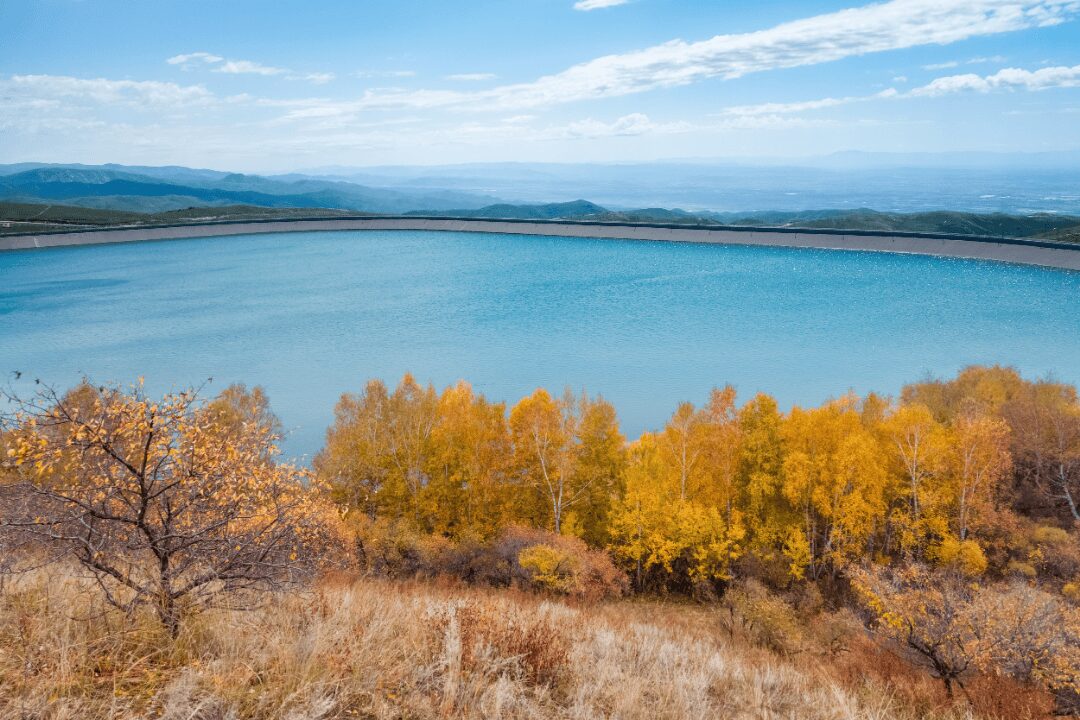
Thousand-Island Lake in Hohhot
I didn’t expect to like Hohhot this much. Honestly, it felt like one of those cities you pass through to get to the “real” scenery, like the grasslands or deserts. But turns out, if you’re hunting for the cheapest place to visit in August, and you want something different—like, horses and yurts different—this place hits a sweet spot. And the dry summer air? That’s gold when you’ve been sweating your way across southern China.
You can live well here for under $40 a day. Rooms at local hotels that accept foreigners (like Jinjiang Inn or Hanting) go for ¥120–160 ($16–22 USD) per night, and there are plenty of Mongolian-style barbecue joints or noodle stalls where you’ll get stuffed for ¥25 ($3.5 USD). Hohhot also has direct train access from major cities like Beijing or Xi’an, and soft sleeper tickets usually run ¥150–200 ($20–28 USD)—that’s cheaper than one-way airport cab rides in other cities.
Things to Do That Don’t Cost Much
Start at Dazhao Temple, a massive Tibetan Buddhist temple with silver Buddha statues and incense curling up into a sky that somehow always looks cleaner here. Entrance is ¥35 ($5 USD), and you’ll likely end up chatting with an elderly local or two sitting by the gate. Then walk to Five-Pagoda Temple, where Mongolian script and Sanskrit carvings live side-by-side—it’s small but serene, and entry is ¥25 ($3.5 USD).
But the moment that really stays with you? Renting a bike and heading to Xilamuren Grassland for a day trip. You’ll pass stretches of quiet plains, clusters of sheep, and maybe spot kids racing horses. Tours can feel touristy, but DIY trips let you stop for homemade yogurt and butter tea along the way. Bus + entry costs + food for the day? Under ¥100 ($14 USD). That’s why this still feels like the cheap places to visit in August that actually gives you room to breathe.
Local Food That’s Cheap and Full of Character
- Cold and spicy liangpi noodles
- Milk tea and hand-grabbed roasted lamb ribs
This is lamb country. You’ll smell the skewers before you see them. Try Xinglong Lamb Restaurant (兴隆羊肉馆)—they grill everything over charcoal and serve up lamb spine stew for ¥45 ($6.2 USD) that could feed two. If you’re braver, go for the fermented mare’s milk at local dairies near the outskirts. It’s... polarizing. But hey, you came here for something real. Cheap eats? Definitely, and way more filling than what you’d find in coastal cities.
Where to Stay Without Breaking the Bank
For foreigner-friendly spots, check out Jinjiang Inn, Hanting Hotel, or Holiday Inn Express near the city center. All are walkable to main attractions, and rooms range from ¥120–200/night ($16–28 USD). Staff might not speak fluent English, but they’ll pull out a translation app if needed. Most include free breakfast—think steamed buns, congee, and tea—and they’ll usually help you arrange a taxi to the train station. For a place that feels under-the-radar, Hohhot really comes through on value. That’s rare.
4. Liupanshui, Guizhou— 19°C (66°F), $30 USD /Day
Known For: China’s coolest summer city, untouched highlands, and Yi minority traditions
Average August Temps: High 23°C (73°F), Low 15°C (59°F)
Average Daily Costs: $25–35 USD / person

The World's Highest Bridge — Beipanjiang Bridge
You’ve probably never heard of Liupanshui. Honestly, neither had I. It’s not in your Lonely Planet. No big-name temples, no viral Instagram reels. But that’s exactly why it might be the cheap places to visit in August—and still one of the most refreshing. The air smells like wet pine and grilled tofu. Locals don’t slow down for you, and that somehow makes it feel real.
Rooms go for ¥90–110 ($12–15 USD) if you stay close to the train station—think basic but clean, sometimes with a balcony overlooking green hills. And food? Street carts sell crisp-fried potato spirals doused in cumin for ¥6. A full meal of spicy beef noodles and pickled greens rarely tops ¥30 ($4.2 USD). This is where your dollar stretches, but you still eat like someone’s grandma is in the back cooking.
Things to Do That Don’t Cost Much
Start your day at Minghu Park. At 7AM, the place turns into a swirl of tai chi, Chinese opera warm-ups, and old men swinging swords in slow motion. You’ll probably be the only foreigner. Later, take a local minibus (¥6, $0.80) to Yushe National Forest Park. It’s lush, shaded, and damp in a way that feels primal—ferns, moss-covered stones, waterfalls you don’t need to share. Entry is just ¥20 ($2.8 USD). It’s not Instagram-perfect, but it stays with you.
On market days, wander through the Yi Minority Market in the old town area. It’s not tourist-friendly, but that’s why it works. No signage, no translations—just smoked meats hanging from poles, pickled chilies in plastic buckets, and kids running around with rainbow-colored rice snacks. If you’ve been craving something raw and unstaged, this scratches that itch.
Local Food That’s Cheap and Full of Character
- Shuicheng Stone-Grilled Hotpot (Luoguo)
- Lamb Rice Noodles
Yes, there’s a Starbucks. And sure, you’ll spot a couple KFCs too—Liupanshui isn’t a village in the woods. But skip them, seriously. What makes eating here special isn’t what’s familiar—it’s what’s only here. Try the stone-grilled hotpot, cooked right on a slab of volcanic rock. It's loaded with wild herbs and highland pork, and the whole thing crackles like a campfire. ¥40–50 ($6 USD) is enough for two, and locals will point you to a spot near Luohanshan Gate—no sign, just steam and the smell of garlic in the air.
If you're up for a challenge, go for the fermented tofu rice noodles. Yeah, they smell like something got left in the fridge too long—but once you get past that? They’re oddly silky, a little cheesy, and super comforting in a weird way. I ended up next to a retired teacher who laughed and said, “Most foreigners give up after one bite. You didn’t. Respect.” Weird compliment, but it stuck with me.
Where to Stay Without Breaking the Bank
For stays, Home Inn and 7Days Inn are your safest bets—clean, cheap, no nonsense. Prices run from $12–20 USD/night, and some come with breakfast: warm congee, steamed buns, and pickled veggies. You won’t get concierge service, but staff will use translation apps and even scribble directions for you.
5. Guiyang, Guizhou— 23°C (73°F), $37 USD /Day
Known For: spicy street food, cool misty climate, and unpretentious local charm
Average August Temps: High 27°C (80°F), Low 19°C (66°F)
Average Daily Costs: $32–42 USD / person
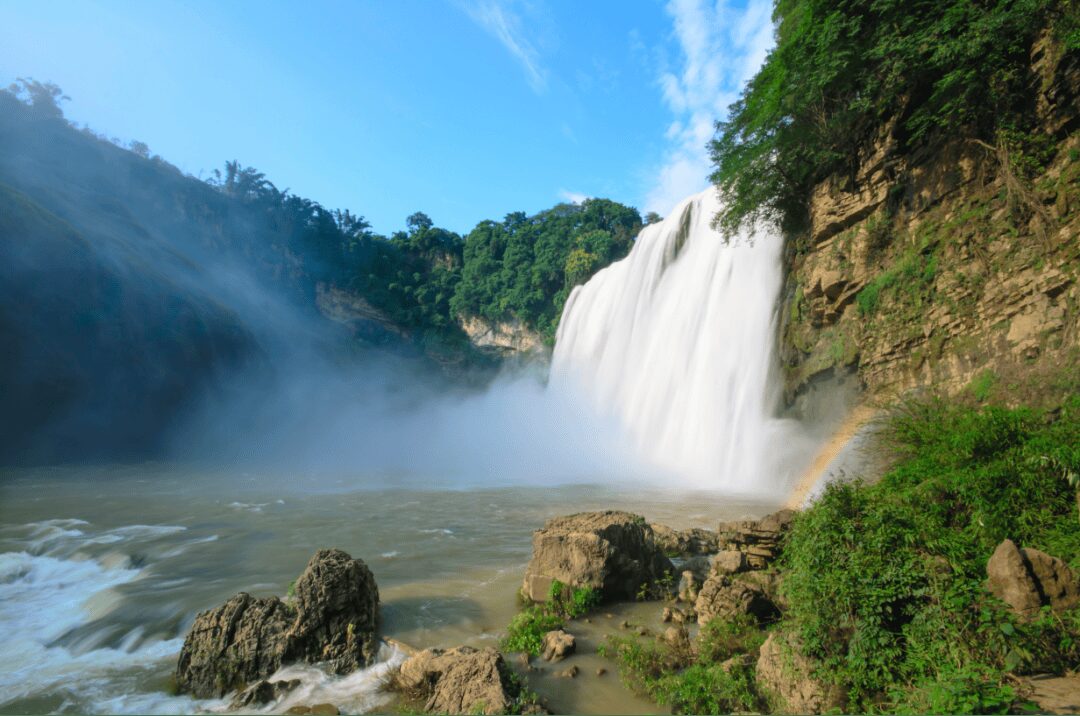
Wolongtan Waterfall
Some cities just feel like they weren’t designed for August. Guiyang is one of them—but in a good way. It’s foggy, green, slightly damp, and that’s exactly why it works. When everywhere else is melting in heatwaves, people here walk around in light jackets, sipping soy milk and hot noodles at 10am. It’s probably one of the cheapest places to visit in August in China where you won’t constantly be looking for air conditioning.
You’ll find decent rooms near Huaguoyuan for under ¥150 a night ($20 USD), and that includes reliable Wi-Fi, soft beds, and usually a kettle for tea. Hostels near Jiaxiu Tower sometimes go even lower—just double-check they accept foreign passports. Food? A steaming bowl of Huaxi beef noodles runs you ¥18 ($2.5 USD). Add a cold plum juice or a local herbal tea, and your whole meal is still under $4.All told, Guiyang quietly ranks as a real cheap place to visit in august—cool weather, tiny bills, zero sweat.
Things to Do That Don’t Cost Much
- Qingyan Ancient Town
- Qianling Mountain Park
Qianling Park doesn’t cost a cent to enter. Monkeys roam freely, old men play cards on stone tables, and incense smoke drifts from the hillside Hongfu Temple. If you walk the full trail, you’ll break a sweat—but the shade keeps it pleasant. In the evenings, head to Wenchang Pavilion area. Locals dance to old pop songs with glowing fans and portable speakers. It feels surreal—almost staged, but totally real. This isn’t a polished tourist experience. That’s the point.
Local Food That’s Cheap and Full of Character
The star here is sour soup fish (酸汤鱼)—served bubbling, bright red, and mouth-tingling. The good places cook it with wild tomato broth and fermented chili, and they’ll ask how spicy you want it on a 1–5 scale. I said “3” and still had to pause between bites. One restaurant I keep going back to is “Lao Yao Suantangyu” near Zhonghua North Road. Not fancy, but packed every night by 6pm. The owner told me the recipe came from his grandma, and yeah—it shows.
Where to Stay Without Breaking the Bank
Try Guiyang Wow Youth Hostel or 7 Days Premium Hotel (both confirmed to allow foreigners). Rooms are clean, basic, and close to bus stops or metro lines. Most sites are easy to reach, and honestly, transport costs are minimal here—just ¥2 for a city bus or ¥4 for a subway ride. Even with detours and snacks, you’re still under $40 a day without sacrificing much.
The above weather data is sourced from Weather Spark.
Bonus Tips for Budget-Friendly Booking in China
If you want to keep your trip cheap but still easy, you gotta play like the locals. That means ditching the “international” booking sites. Skip Booking.com or Trip.com’s English mode unless you’re desperate. The real deals? They hide in plain sight—on Ctrip’s Chinese app, 12306, and Meituan B&Bs.
Here’s the move: use Google Translate or better yet, get a Chinese-speaking friend to help you book directly. You’ll often find train tickets 10–20% cheaper on the 12306 official app (yes, it’s safe and foreigners can register with their passport). For housing, Meituan and Tujia offer private apartments and small inns at half the price of major hotels. Just make sure they say "接待外国人", or you might get denied at check-in.
Also, book weekday stays. Hotel rates in places like Dali, Kunming, or Guiyang drop by 30–40% outside weekends. And keep an eye on short video apps like Douyin—they often have flash travel deals locals snap up fast. Feels like hunting for treasure, but honestly? That’s half the fun
